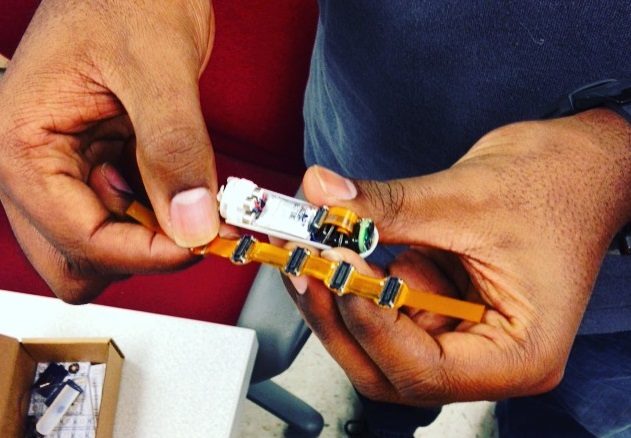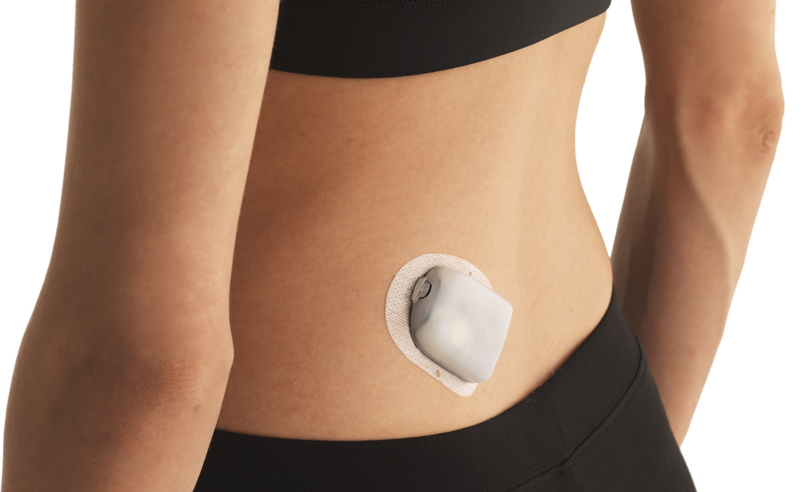Swallow the doctor: the present and future of robots within us
A robot is an automatic device that operates according to an established program, receives information about its appearance from sensors and performs any operations, among which are those that a person usually performs. Robots can work independently or receive commands from the operator, they can be connected to the network or have their own autonomous power source. Separately isolated nanorobots, industrial robots, household robots.
Today we’ll talk about robots that help people live and survive - medical robots for operations, maintaining life, and treating cancerous tumors. The capsule robot collects itself inside the patient

The Italian ARES robot is needed for operations without damaging the patient’s skin. This robot must first be eaten: the patient swallows it in parts, and the robot exits through the intestines. A robot inside a person collects himself. The name of the robot means "Assembling Reconfigurable Endoluminal Surgical System", or "Self-assembled endoluminal surgical system with a changeable configuration."
This robot belongs to a separate group of capsule robots. Developers from Vanderbilt University have opened an open source platform for developing these devices .

A bionic prosthesis is an artificial robotic limb that the user controls with the help of muscles or consciousness when using the neurocomputer interface, and which can be sensitive to touch and temperature.
In the photo - a Limber Bionic Arm robotic arm that connects to a smartphone: sensors from the patient’s body send information about muscle contraction to the smartphone, and the smartphone instructs the hand to move. The device can control every finger.

DAPRA's Deka Arm allows a volunteer to pinch a grape from a bunch without both hands and put it in his mouth.
An implantable pacemaker maintains a normal heart rhythm. It monitors the rhythm and, in the event of a malfunction, sends an electrical signal. A small device is installed in the subclavian region under the pectoralis major muscle, and the electrodes are passed through a puncture to the heart chambers. The device is fixed to the tissues.

Pacemaker of Russian manufacture. Photo: Wikipedia
Such pacemakers have existed since 1958. They can be attributed to robots, because they monitor the environment - that is, the rhythm of the heart, respond to stimuli - to a rhythm disturbance, and work autonomously. Although these are far from nanorobots, they are by no means large. There is a smaller option - Medtronic Micra: through the artery in the leg, the doctor catheters the device to the heart, where the gadget is attached with teeth to the wall. Then the programmer tests and adjusts the device, and the doctor removes the catheter.


The same class of devices includes a wearable insulin pump - an artificial pancreas that measures blood sugar and sends insulin to the patient at the right time.

Smaller robots, or nanorobots, are trying to use for drug delivery. In 2014, scientists from South Korea developed a nanorobot to fight cancer . Robots move through the human body to the tumor, being in the Sammonmonella bacteria, and then release the capsules with the medicine. Chemotherapy has side effects , as it acts not only on the tumor, but on the patient’s entire body as a whole - this is especially noticeable in hair loss. Using nanorobots helps to avoid these side effects.
In 2012, scientists worked on a Cyberplasm robot , the size of which did not exceed a centimeter in length. The robot's mission was to travel through the human body using the circulatory system and search for diseases using installed sensors.

For many years, science fiction dreamed of nanorobots, bionic robotic prostheses, medical robots. And we already have pretty high-quality prostheses, some of which are able to feel. We have been using the Da Vinci robot surgeon for remote operations for many years . Design robots assemble themselves inside a person to conduct non-invasive operations. We have devices wearable in the body that save the lives of people with a sick heart. Scientists and doctors are developing nanorobotsable to deliver medicine. Many dreams of science fiction come true , and many more will come true.
Today we’ll talk about robots that help people live and survive - medical robots for operations, maintaining life, and treating cancerous tumors. The capsule robot collects itself inside the patient

Operations
The Italian ARES robot is needed for operations without damaging the patient’s skin. This robot must first be eaten: the patient swallows it in parts, and the robot exits through the intestines. A robot inside a person collects himself. The name of the robot means "Assembling Reconfigurable Endoluminal Surgical System", or "Self-assembled endoluminal surgical system with a changeable configuration."
This robot belongs to a separate group of capsule robots. Developers from Vanderbilt University have opened an open source platform for developing these devices .

Prosthetics
A bionic prosthesis is an artificial robotic limb that the user controls with the help of muscles or consciousness when using the neurocomputer interface, and which can be sensitive to touch and temperature.
In the photo - a Limber Bionic Arm robotic arm that connects to a smartphone: sensors from the patient’s body send information about muscle contraction to the smartphone, and the smartphone instructs the hand to move. The device can control every finger.

DAPRA's Deka Arm allows a volunteer to pinch a grape from a bunch without both hands and put it in his mouth.
Life support and emergency rescue of patients
An implantable pacemaker maintains a normal heart rhythm. It monitors the rhythm and, in the event of a malfunction, sends an electrical signal. A small device is installed in the subclavian region under the pectoralis major muscle, and the electrodes are passed through a puncture to the heart chambers. The device is fixed to the tissues.

Pacemaker of Russian manufacture. Photo: Wikipedia
Such pacemakers have existed since 1958. They can be attributed to robots, because they monitor the environment - that is, the rhythm of the heart, respond to stimuli - to a rhythm disturbance, and work autonomously. Although these are far from nanorobots, they are by no means large. There is a smaller option - Medtronic Micra: through the artery in the leg, the doctor catheters the device to the heart, where the gadget is attached with teeth to the wall. Then the programmer tests and adjusts the device, and the doctor removes the catheter.


The same class of devices includes a wearable insulin pump - an artificial pancreas that measures blood sugar and sends insulin to the patient at the right time.

Drug delivery
Smaller robots, or nanorobots, are trying to use for drug delivery. In 2014, scientists from South Korea developed a nanorobot to fight cancer . Robots move through the human body to the tumor, being in the Sammonmonella bacteria, and then release the capsules with the medicine. Chemotherapy has side effects , as it acts not only on the tumor, but on the patient’s entire body as a whole - this is especially noticeable in hair loss. Using nanorobots helps to avoid these side effects.
In 2012, scientists worked on a Cyberplasm robot , the size of which did not exceed a centimeter in length. The robot's mission was to travel through the human body using the circulatory system and search for diseases using installed sensors.

For many years, science fiction dreamed of nanorobots, bionic robotic prostheses, medical robots. And we already have pretty high-quality prostheses, some of which are able to feel. We have been using the Da Vinci robot surgeon for remote operations for many years . Design robots assemble themselves inside a person to conduct non-invasive operations. We have devices wearable in the body that save the lives of people with a sick heart. Scientists and doctors are developing nanorobotsable to deliver medicine. Many dreams of science fiction come true , and many more will come true.
